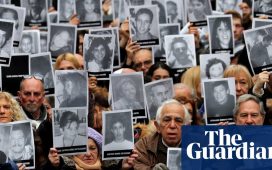All of that paled in comparison to letting a woman, even a celibate woman, act as priest.
To be sure, there are good doctrinal reasons for this, if one wants to find them. According to the laws of the Catholic Church, known as canon law, that priests might marry or not is man-made law, therefore mutable, while the exclusion of women is divinely ordained. But the priesthood itself is a man-made invention, an amalgam of Judeo-Roman and other traditions, refined and also only rather belatedly attached to the mass, a ritual performance that re-enacts and celebrates the most important tenets of Catholic faith.
Pope Francis himself has acknowledged that there could be what the theology professor Gary Macy has called a “hidden history” in which women had a larger role in ministry than the Catholic Church currently accepts, for which scholars such as Dr. Macy have found ample and intriguing evidence. While rejecting much of this evidence, conservative Catholic authorities do, however, recognize that for several centuries, their predecessors, like the leaders of the Eastern Churches then and now, allowed married men to serve as priests or as bishops, though sometimes they required celibacy and that their wives enter religious life.
The medieval requirement that a priest abstain from sex and from marriage probably made it harder to find men willing to serve from the first moments it was mandated, though willingness to turn a blind eye when priests engaged in same-sex relations, kept mistresses and committed sexual assault may have helped. Even so, we know that there were shortages, for bishops complained then, just as they are doing now.
The solutions they proposed, however, were never that women be ordained. Instead, they sought and obtained permission to ordain men born out of wedlock, men convicted of serious crimes, converts and men who did not meet the age requirements or educational requirements. Indeed, Catholic authorities have often proved willing to bend on a wide range of criteria. A sticking point has been that a candidate to the priesthood must have male genitalia (or at least have been born with them). Even men with “imperfect” genitalia, as long as they presented as male, or if castrated, could prove that it was done accidentally, could be ordained with special permission. As Western Christianity spread to the Americas, Africa and the East, it was allowed that indigenous men could be ordained, despite considerable and growing racial prejudice.
But no women. Never that.
In subsequent centuries, other variants of Christianity have found the ministry of married men, sexually active men and women acceptable. The Roman Catholic Church has not.






